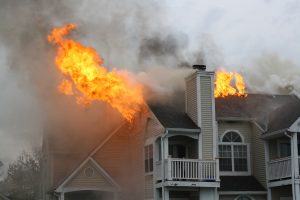 New data from Redfin has found the median sale price of U.S. homes with high-fire-risk was $550,500 in April, compared to $431,300 for homes with low fire risk.
New data from Redfin has found the median sale price of U.S. homes with high-fire-risk was $550,500 in April, compared to $431,300 for homes with low fire risk.
The report, co-authored by Redfin Senior Data Journalist Lily Katz and Redfin Senior Economist Sheharyar Bokhari, found that fire-prone homes have historically fetched higher prices, likely because they tend to be larger and/or located in pricey West Coast metros. The pandemic, which opened the doors to more remote working opportunities, allowed Americans to move out of cities and into suburbs and rural areas, where homes are more likely to face fire risk due to the proximity to flammable vegetation.
Redfin’s study concluded that typical home with high-fire-risk sold for $119,200 (27.6%) more than the typical home with low-fire-risk—the largest premium in dollar terms since at least 2017. By comparison, homes with high-fire-risk sold for just $56,700 more (18.5%) two years earlier.
The typical high-fire-risk home purchased in April 2022 was 2,000-square feet, while the typical low-risk home was just 1,706 square feet. The median sale price of high-risk homes was up 51.7% in April 2022 from two years earlier, while the median sale price of low-risk homes was up 40.9%.

“Suburban homes tend to be more expensive because they’re large, and demand for large homes skyrocketed during the pandemic as Americans sought respite from crowded city life,” said Bokhari. “Pandemic buyers also hunted for deals due to surging home prices, and while fire-prone homes aren’t cheaper on average, buyers may feel they’re getting more bang for their buck because they’re getting more space. And for some pandemic buyers, the fire-prone home they bought in suburbia was actually cheaper than their last home because they were relocating from somewhere like San Francisco or Seattle.”
Redfin found that not only are home in high-fire-risk zones selling at higher prices, but also moving off the market in a more expedited fashion, as the typical high-risk home sold in just 16 days in April, compared to 20 days for the typical low-risk home. This trend marked a shift from before the pandemic, when low-risk homes typically sold at a faster clip. Nearly two-thirds (62.4%) of high-fire-risk homes sold within two weeks in April, compared to just 55.1% of low-risk homes. Prior to the pandemic, high- and low-risk homes had about the same likelihood of selling within two weeks.
“For a lot of pandemic-era homebuyers, what has felt much more urgent than avoiding fire danger is finding a home they can afford at a time when inventory is so low and prices are so high,” said Corey Keach, a Redfin Real Estate Agent in the Boulder, Colorado area, where the Marshall Fire—the most destructive in the state’s history—destroyed more than 1,000 homes at the end of 2021. “I worked with a young family whose Louisville home burned down in the Marshall Fire. Afterwards, they moved to nearby Superior, where a lot of homes also burned down. They just wanted to get into their next home fast because they had already gone through the painstaking buying process in 2020, and were worried prices were going to skyrocket another 20%.”
The report also found that sellers of high-fire-risk homes in recent weeks have become more likely than sellers of low-risk homes to slash their listing prices after putting their homes on the market. In April 2022, 21.9% of high-risk listings had price drops, compared to 18.8% of low-risk listings—marking only the second month on record (the first was March) during which fire-prone homes were more likely to have price drops.
Regionally, home price drops have been on the rise in the country as mortgage rates continue to linger above the 5%-mark, thus triggering a slowdown in demand. Boise, Idaho and Sacramento, California, two hotspots for homebuyers relocating from pricey major cities, were among the top five metros where sellers cut their asking prices in April, and both markets also happen to face substantial risk from wildfires.

 DSNews The homepage of the servicing industry
DSNews The homepage of the servicing industry









